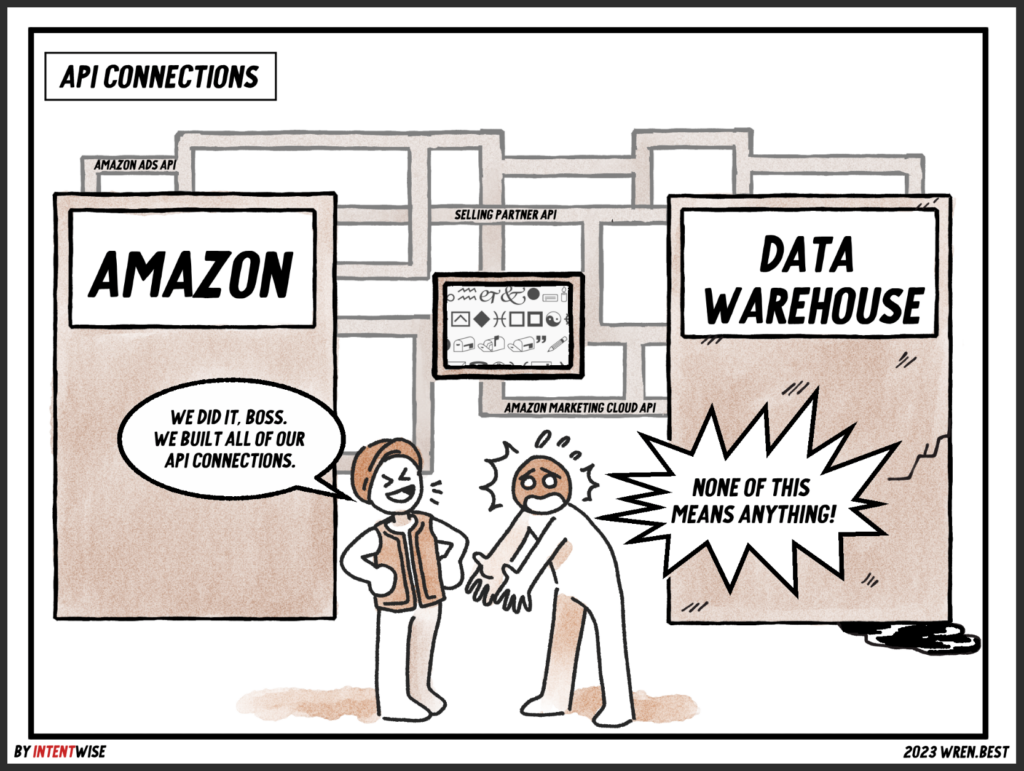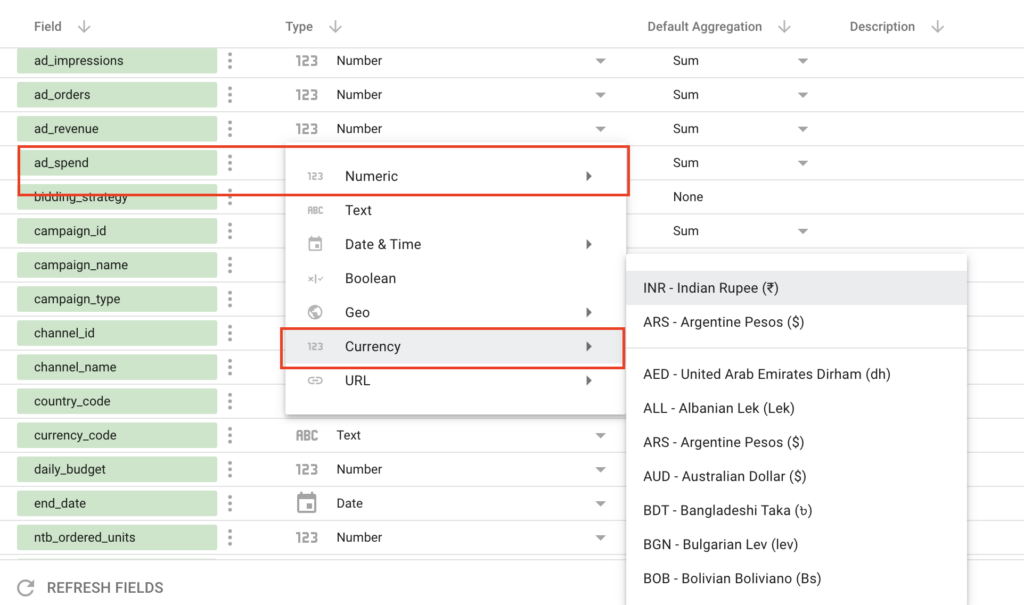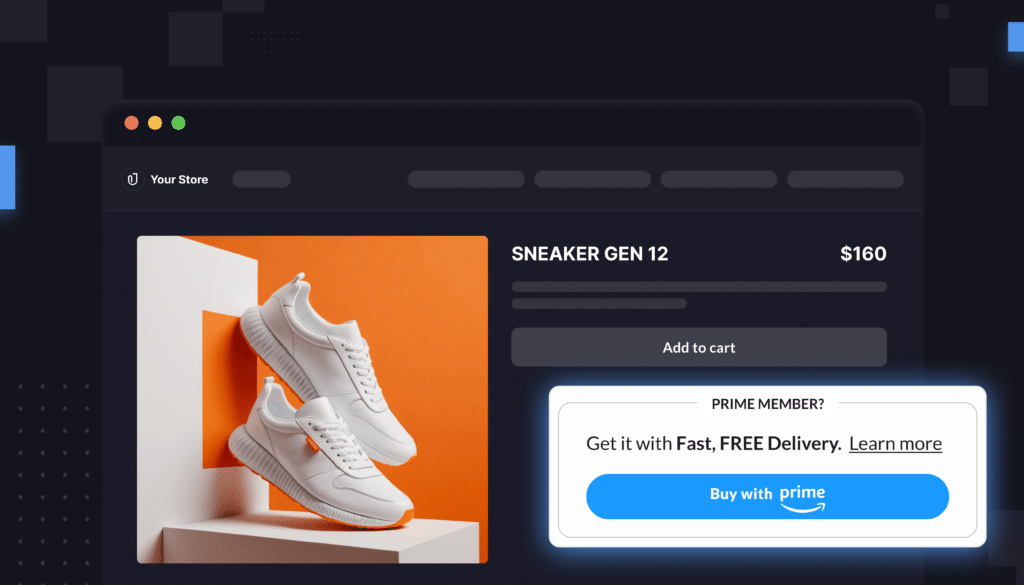Recently, I’ve noticed that agencies, brands, and software providers were talking a lot about API connections.
This is heartening to see. I have long said that brands and agencies should do more with their data. What you see in your Amazon Ad Console, Seller Central, and Vendor Central is great—but if you really want to scale, you want to have data that’s customized to your needs.
But as more brands and agencies discuss APIs, I’m starting to encounter a common pattern. So often, I see brands pull in their data, without realizing there is a lot more to be done to get value out of it.
Here’s the reality: Establishing these API connections alone is not enough.
When you build API connections with no plan for how to organize and enrich that data, you’re going to be stuck sifting through a whole lot of confusing inputs. The experience will probably feel a bit like this:

I tell brands that establishing API connections is only the first step in leveraging their Amazon data. Next, you need to enrich, organize, visualize, and analyze all of that data. Let me explain.
Step 1: Enrich your data
Enrichment is essentially the process of adding additional data, tags, and attributes to help you build a story specific to your company.
This helps dramatically shrink what I sometimes call the “time to insight” from data. Here are a few examples of data enrichment:
Currency conversions. If you are a brand with a presence across multiple geographic marketplaces, you have to deal with different currencies. Currencies have to be normalized to understand performance across these geographies. And for that, you need currency conversion data handy.

Grouping. Next, you want to bundle campaigns and products in ways that are unique to your company: by price, by subcategory, by brand, and more.
Product and campaign grouping has to be baked into your datasets for you to build reports relevant to your needs.
Let’s say you sell 5,000 different products. It makes no sense to try to evaluate all of your campaigns on the product level. You’re going to group products together to run this analysis.
(We explained the benefits of grouping in more depth here.)
Brand vs. non-brand. Each brand has its own set of brand terms to maintain. Take your search term report as an example. You’re going to want to segment out brand vs. non-brand search terms in order to have a clearer picture of which campaigns are driving incremental sales.
Step 2: Reorganize your data to support faster analytics
Enriching the data you sourced from Amazon’s APIs is critical—but the reality is, when you’re in charge of marketing for a brand, you need to see many different metrics quickly.
That’s where the next step comes in: Reorganizing all of these insights into a single view.
Getting that 360 view isn’t easy. You need to join together dozens of different data sets you downloaded from Amazon’s APIs. It’s an incredibly time consuming process, and it’s prone to error. Messing up one line in the report can spoil the entire data set.
If you’ve ever spent hours in Excel writing VLOOKUPs to bring your inventory, sales, and ads data together—you know exactly what I mean.
Wait, why are we talking about APIs now?
One reason APIs are on the minds of many brands is that Amazon is now sharing more data than ever through its APIs.
Tools like Amazon Marketing Cloud and Amazon Marketing Stream are providing new views into your Amazon performance. AMC is now even showing up in the Ad Console.
But I think there’s another reality to keep in mind. AI is becoming increasingly accessible to brands. Making the most of it requires brands to own their data, keep it comprehensive, enriched, and organized.
Imagine a theoretical AI that can identify under-performing products. Unless you have enriched and connected your fragmented data, how will the AI know that, say, those ten products belong to a single group? And if your ad data isn’t combined into a 360-degree view with your sales data, then the AI is getting an incomplete picture of your business.
In other words: You’re not going to be able to draw good insights from AI tools unless your data speaks the language of your brand and is comprehensive.
This AI example is purely forward-looking, but I think it highlights the importance of enrichment and organization for humans, too.
So once you link your APIs, remember that you still need to enrich and organize that data so you can make seamless use of it going forward.
(Looking to have your data organized and enriched into clear, easy-to-use views for you? Intentwise Analytics Cloud has you covered.)








